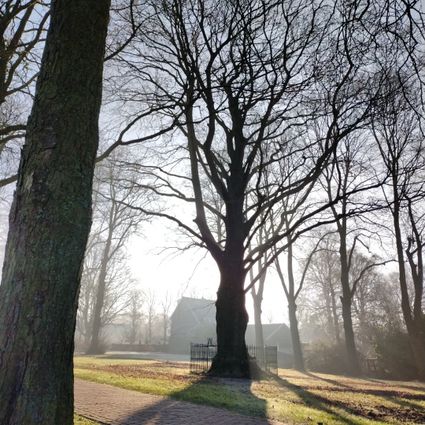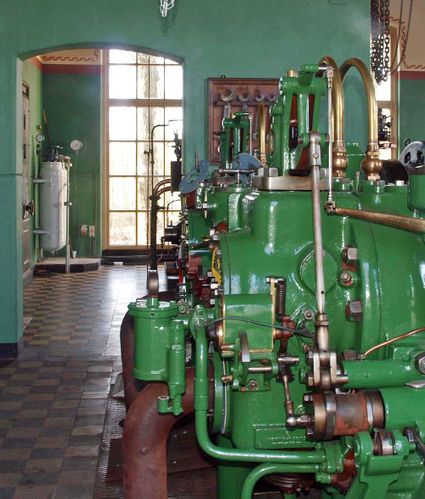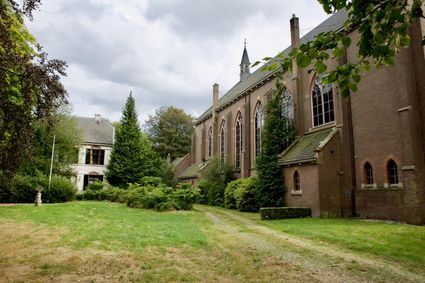5
Hike
5.5 km (1 hour 25 minutes)
1815. After Napoleon is defeated in the Battle of Waterloo, the newly established Kingdom of the Netherlands is thrown into great poverty, especially in cities. General Johannes van den Bosch establishes the Maatschappij van Weldadigheid (Society of Benevolence) through which the poor were to be ‘nursed to a better existence’ and taught a profession to enable them to provide for themselves. Seven Koloniën van Weldadigheid (Colonies of Benevolence) are founded: five in the north (Frederiksoord, Willemsoord, Wilhelminaoord, Ommerschans and Veenhuizen) and two in the south (Wortel and Merksplas, now Belgium). Vagrants, poor families, beggars and orphaned children are voluntarily and forcibly admitted.
Veenhuizen, the sixth colony, is established in 1823. Three asylums are built where staff and inmates (as the poor and the orphans are called) live and work. In 1859 the Maatschappij van Weldadigheid goes bankrupt and is taken over by the State.…
1815. After Napoleon is defeated in the Battle of Waterloo, the newly established Kingdom of the Netherlands is thrown into great poverty, especially in cities. General Johannes van den Bosch establishes the Maatschappij van Weldadigheid (Society of Benevolence) through which the poor were to be ‘nursed to a better existence’ and taught a profession to enable them to provide for themselves. Seven Koloniën van Weldadigheid (Colonies of Benevolence) are founded: five in the north (Frederiksoord, Willemsoord, Wilhelminaoord, Ommerschans and Veenhuizen) and two in the south (Wortel and Merksplas, now Belgium). Vagrants, poor families, beggars and orphaned children are voluntarily and forcibly admitted.
Veenhuizen, the sixth colony, is established in 1823. Three asylums are built where staff and inmates (as the poor and the orphans are called) live and work. In 1859 the Maatschappij van Weldadigheid goes bankrupt and is taken over by the State.
From 1875, the management of Veenhuizen is in the hands of the Ministry of Justice and it is transformed into a prison village. Just like the colony, the prison village is self-sufficient. Staff is obliged to live in the village. Others aren’t welcome, unless they have a good reason
for their visit to Veenhuizen.
Architects Johan Frederik Metzelaar (until 1883) and his son Willem Cornelis design buildings for a complete village, respecting the existing structure of the landscape. By using just seven types of houses, a great sense of unity is achieved, giving the village a unique appearance. A hospital complex, a power station, schools, churches and a slaughterhouse are built in the same style.
The architecture reflects the hierarchy: location, shape, size and garden type are indicative of social status and rank. On a number of houses, texts can be found that are either edifying or refer to the profession of their residents. Some housing blocks have a letter or number on the side.
For years, Veenhuizen remains a closed prison village where outsiders are not welcome. A village with its own rules, strict hierarchy, exceptional architecture and unusual landscape design. Around 1985, Veenhuizen becomes freely accessible as the Ministry of Justice slowly but surely withdraws itself from social life. As a consequence, many buildings become derelict and prisons are fenced.
Through the efforts of various parties and local authorities, The Koloniën van Weldadigheid (Wortel in Belgium and Veenhuizen, Frederiksoord and Wilhelmina in the Netherlands) are awarded UNESCO World Heritage status on July 26, 2021. The World Heritage Committee acknowledges the colonies as witnesses of an exceptional, radical and large-scale social experiment for poverty relief through the establishment of domestic agricultural colonies in remote areas.
Start
Veenhuizen Boeit
Oude Gracht 40
9341 AB Veenhuizen
There are parking facilities at the start of this hike.
This hike is accesable all year round.
Because this hike includes dirt roads we recommend wearing sturdy and waterproof shoes.
This hike is marked with green poles.
Haulerweg
9341 Veenhuizen
Navigate to starting point

The National Prison Museum depicts crime and punishment through the centuries. See what punishments were meted out and what a penitentiary looked like.



Haulerweg
9341 Veenhuizen
Navigate to endpoint